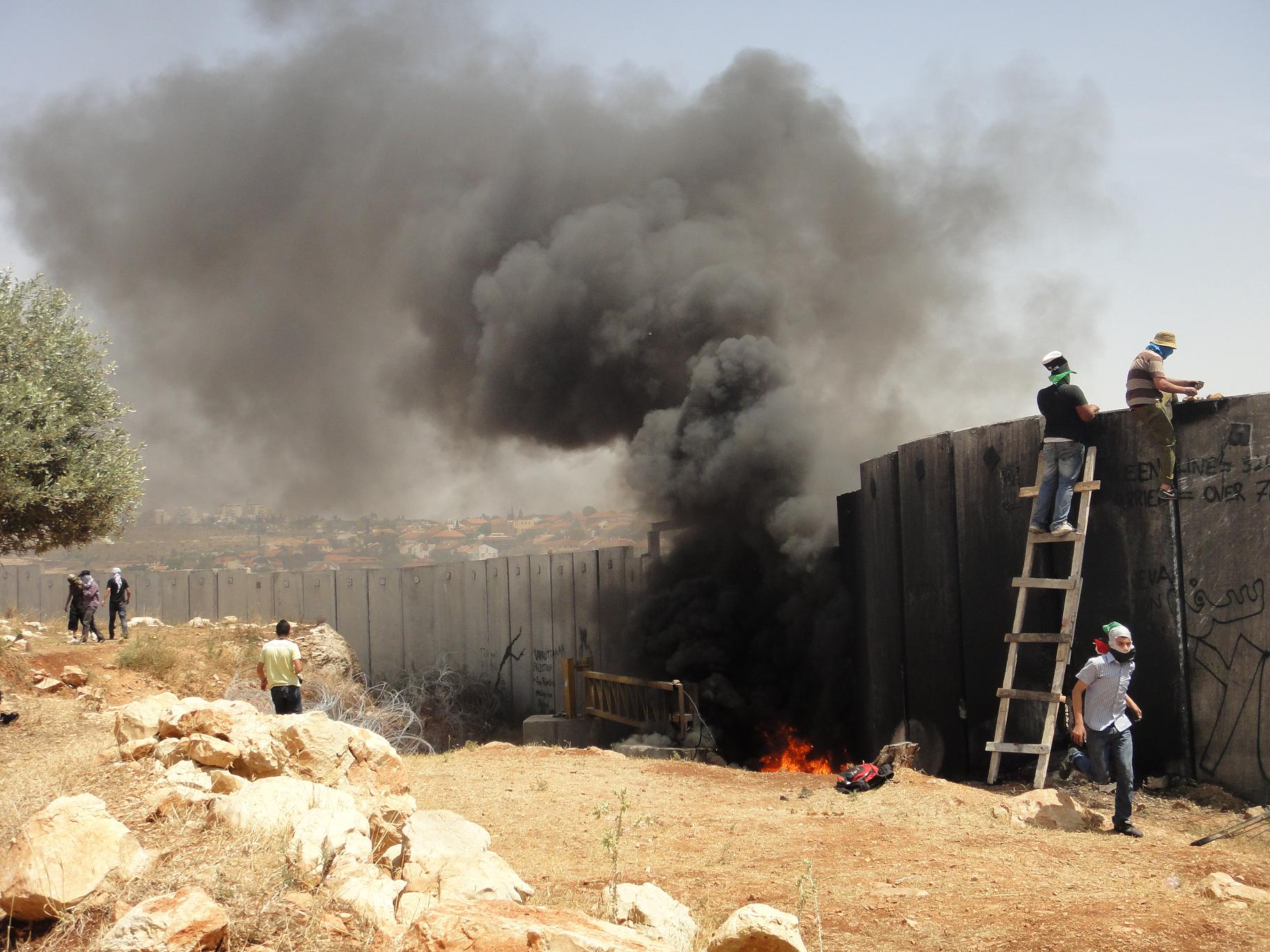Tag: Tear-Gas Canister
-
Photo essay: Gas, frisbees and the Apartheid Wall in Ni’lin
24th May 2013 | International Solidarity Movement, Team Nablus | Ni’lin, Occupied Palestine Friday demonstrations continue in the village of Ni’lin in protest against the Occupation and Apartheid Wall which runs through the village’s land. Background on the effects of the Occupation in Ni’lin is here. During this particular demonstration on the 24th May 2013,…
-
Photo essay: Israeli soldiers sing “We wish your whole village would burn down” to residents of Nabi Saleh
17th May 2013 | International Solidarity Movement, Team Ramallah | Nabi Saleh, Occupied Palestine Today Palestinian, international and Israeli activists marched towards a well that was stolen from the village of Nabi Saleh by the establishment of Halamish illegal settlement. As activists walked down the hill towards the well, Israeli soldiers shot tear gas at…
-
Live ammunition fired at Deir Jarir demonstration against land grab and settler violence
17th May 2013 | International Solidarity Movement, Team Nablus | Deir Jarir, Occupied Palestine The village of Deir Jarir today, 17th May, held its fourth consecutive weekly demonstration to protest Israeli land grab and settler violence against its villagers. The rally was violently suppressed by Israeli forces, who shot large amounts of tear gas and…

